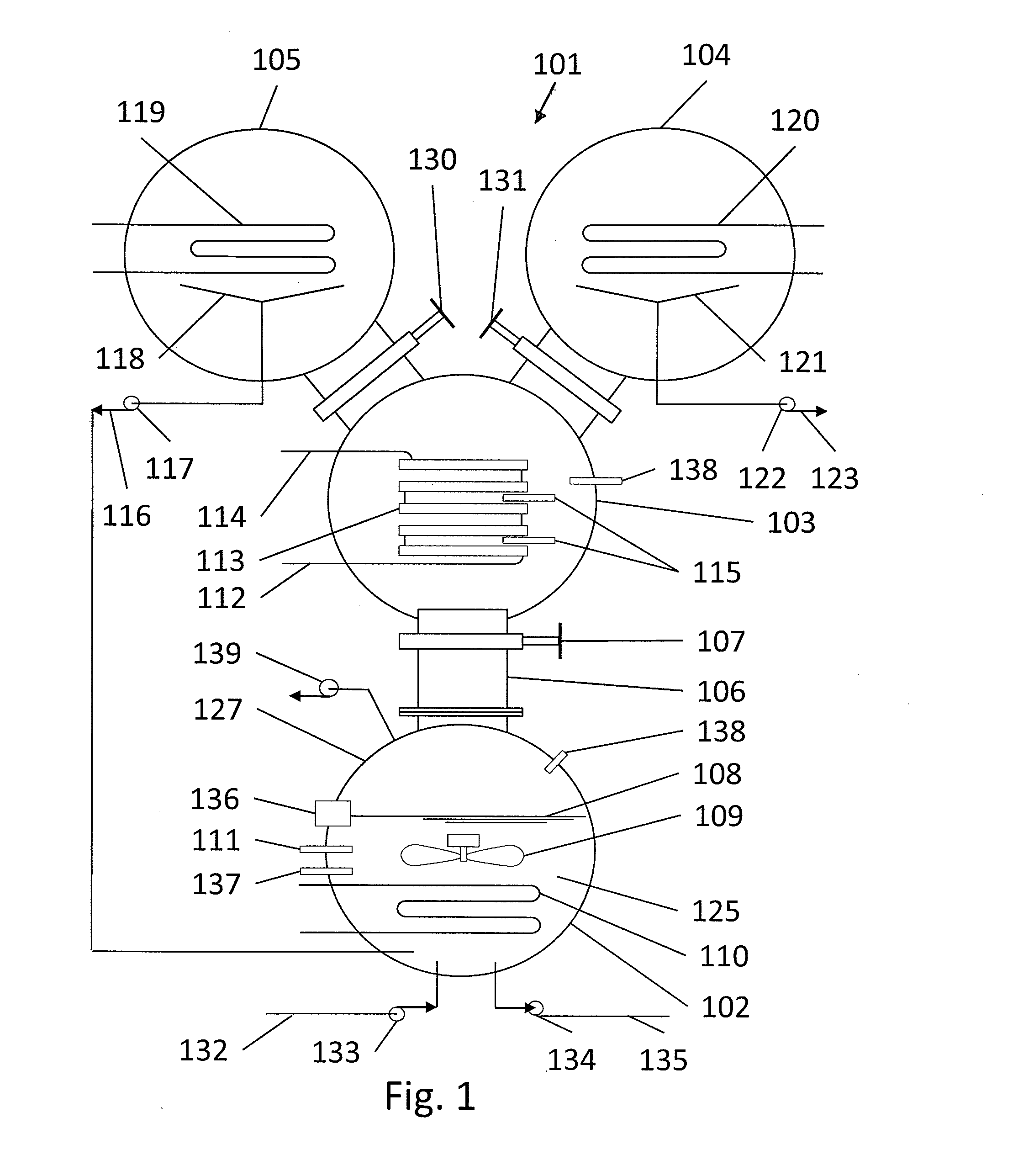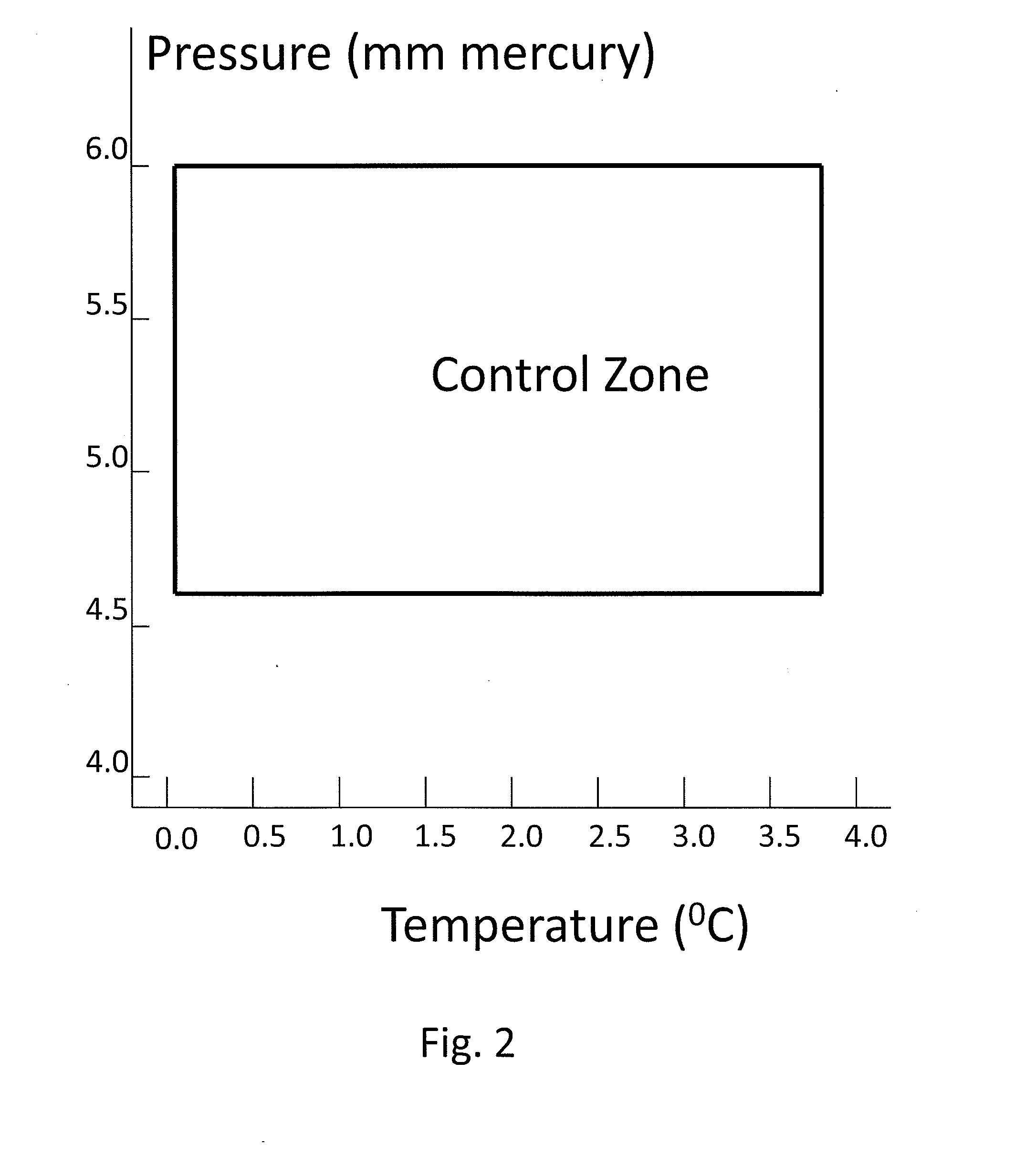Heat Driven Concentrator With Alternate Condensers
a concentrator and condenser technology, applied in separation processes, nuclear engineering, evaporation, etc., can solve the problems of radiation hazards, limited facilities that can clean or separate tritiated water, and provide significant risk of contamination from small leakage, so as to promote adsorption of sorbate, reduce the partial pressure, and high partial pressure
- Summary
- Abstract
- Description
- Claims
- Application Information
AI Technical Summary
Benefits of technology
Problems solved by technology
Method used
Image
Examples
Embodiment Construction
[0037]FIG. 1 illustrates a heat driven concentrator 101 according to the present invention. The heat driven concentrator 101 is used to practice a novel method of concentrating tritiated water. A contaminated water solution 125 comprising normal water and hydrogen-related isotopologues of water, including tritiated water, is placed into an evaporator chamber 102 maintained at a partial vacuum and near freezing temperature such that the tritiated water will freeze while normal water will not. Frozen tritiated water is separated from liquid water by evaporating liquid water from a cold contaminated water solution maintained within a temperature range of above 0° C. to below 3.8° C., and within a partial pressure range of about 4.6 to about 6 mm mercury in an evaporator chamber. This same process could be used for other separation processes and other fluids at other temperature and pressure combinations providing that one fluid can be frozen and the second evaporated and captured as a ...
PUM
| Property | Measurement | Unit |
|---|---|---|
| Temperature | aaaaa | aaaaa |
| Temperature | aaaaa | aaaaa |
| Length | aaaaa | aaaaa |
Abstract
Description
Claims
Application Information
 Login to View More
Login to View More - R&D
- Intellectual Property
- Life Sciences
- Materials
- Tech Scout
- Unparalleled Data Quality
- Higher Quality Content
- 60% Fewer Hallucinations
Browse by: Latest US Patents, China's latest patents, Technical Efficacy Thesaurus, Application Domain, Technology Topic, Popular Technical Reports.
© 2025 PatSnap. All rights reserved.Legal|Privacy policy|Modern Slavery Act Transparency Statement|Sitemap|About US| Contact US: help@patsnap.com



